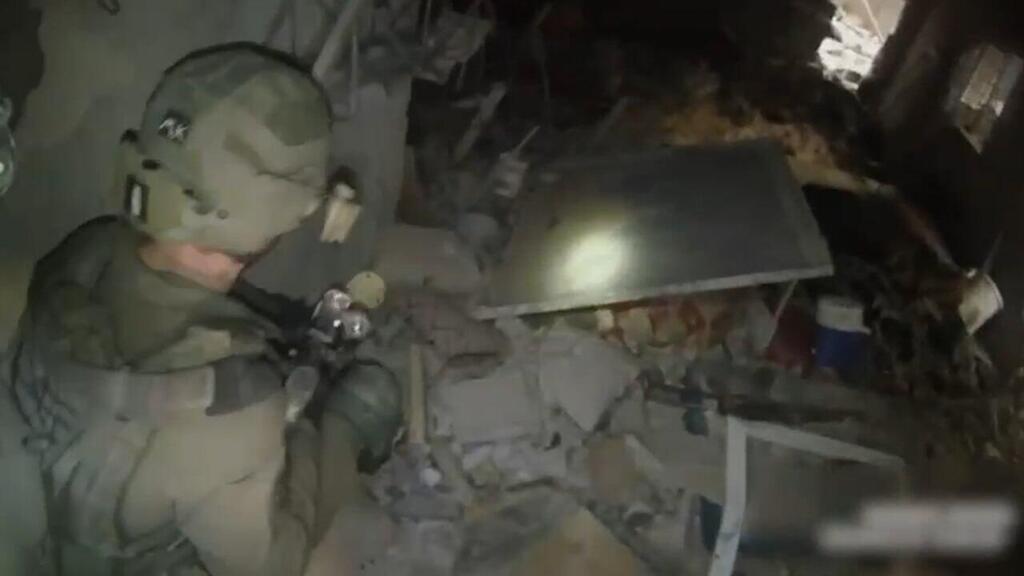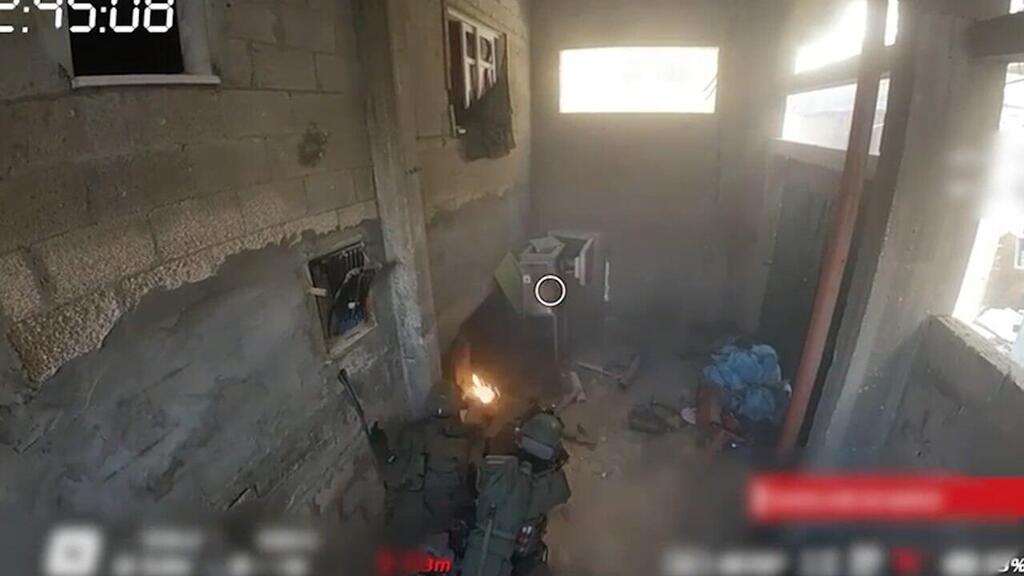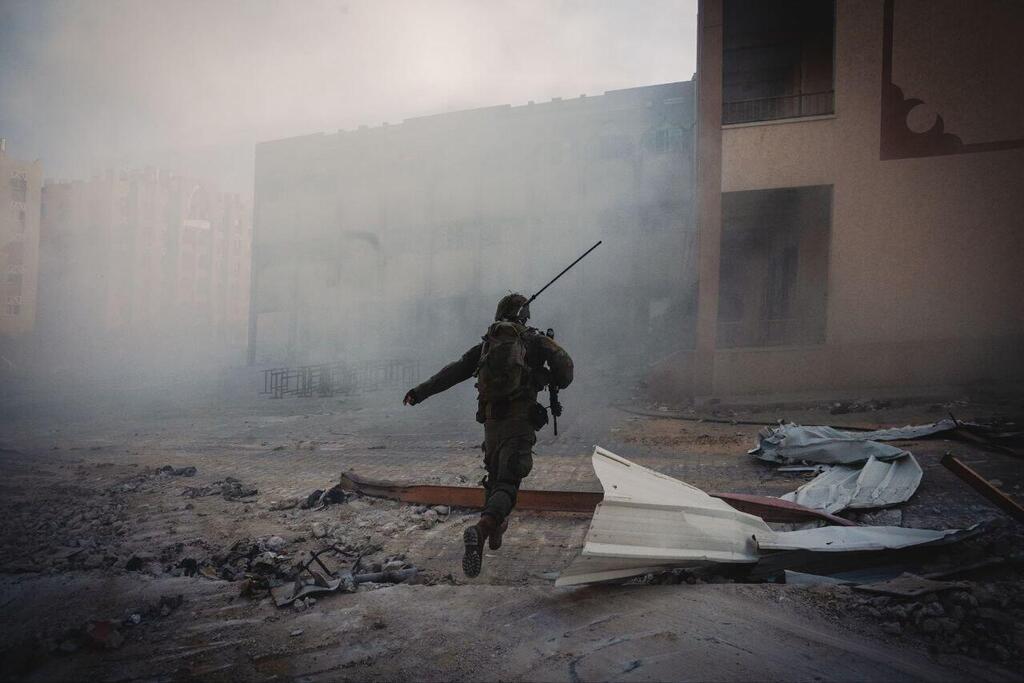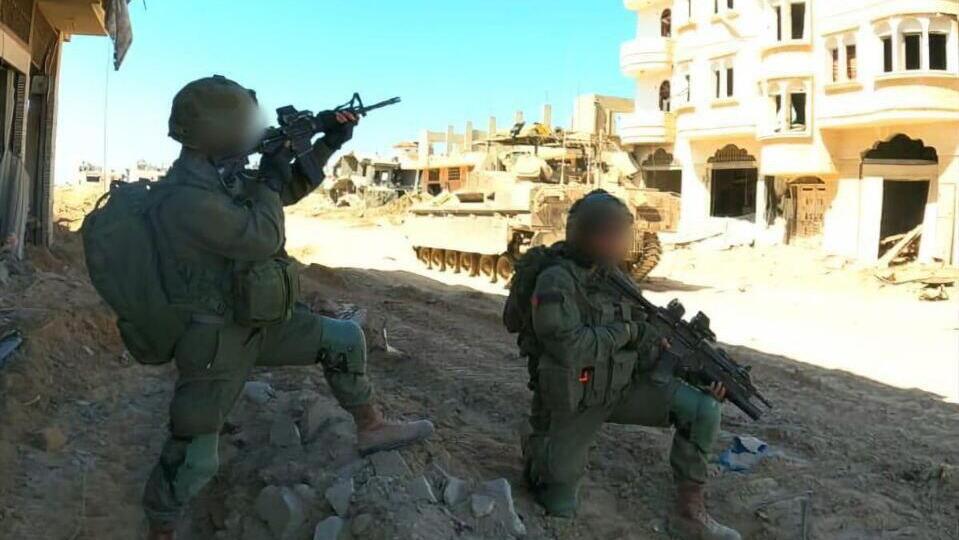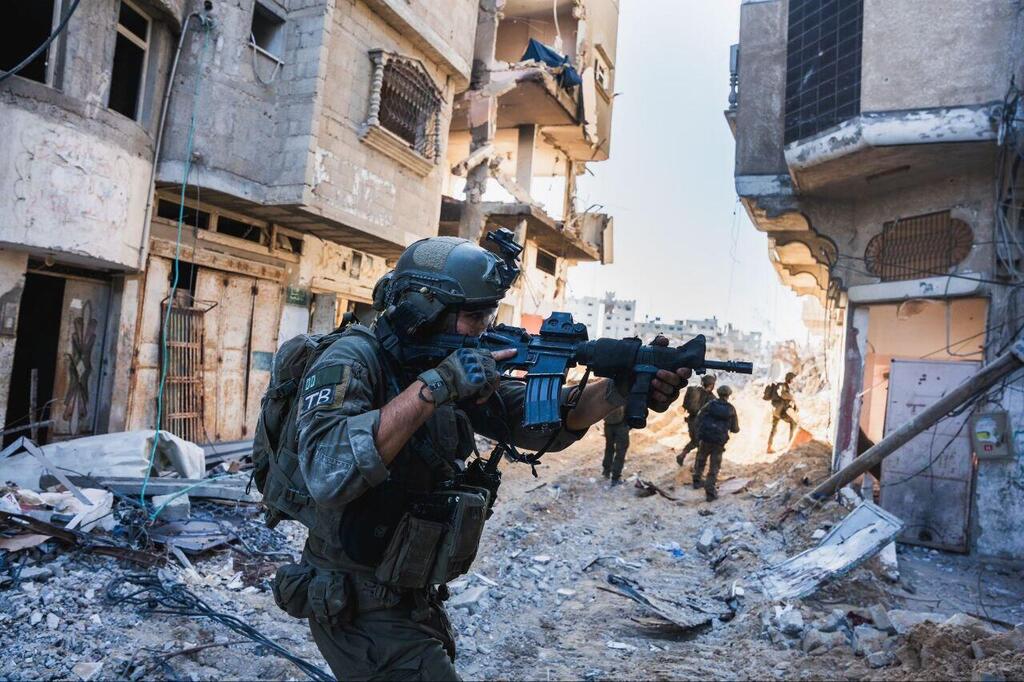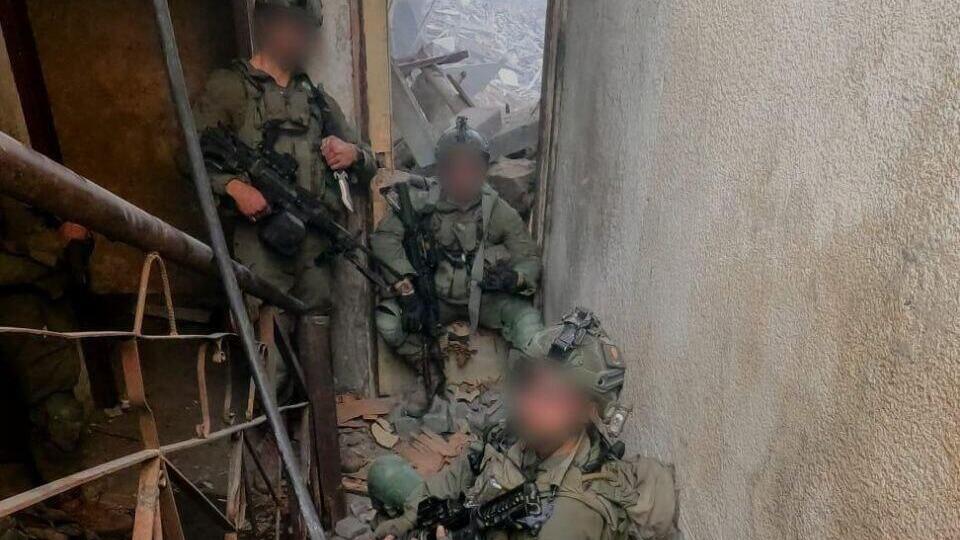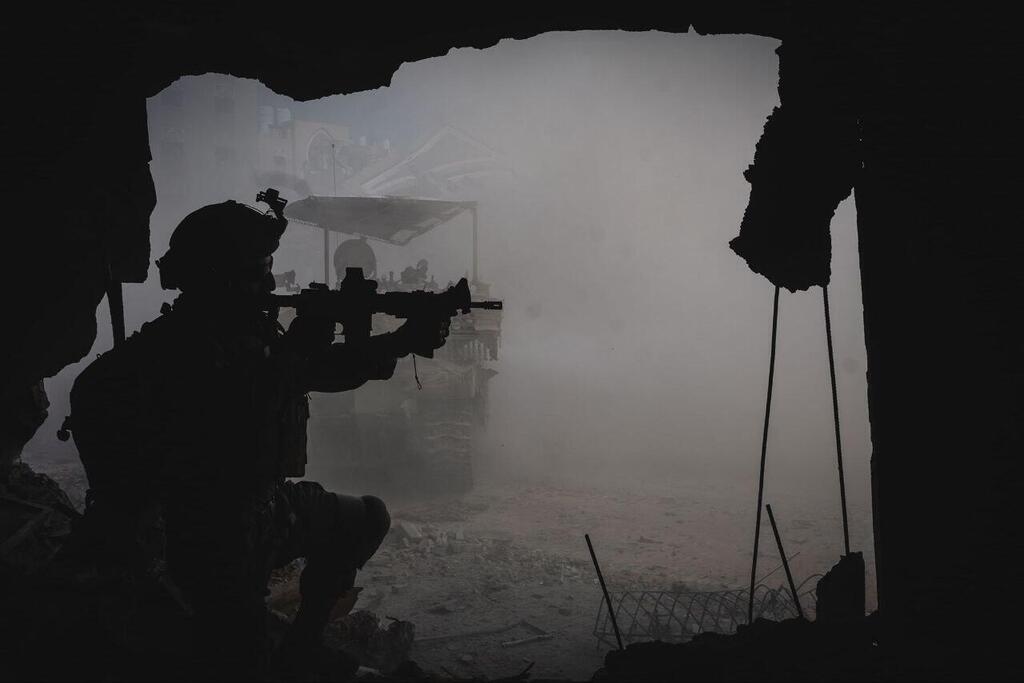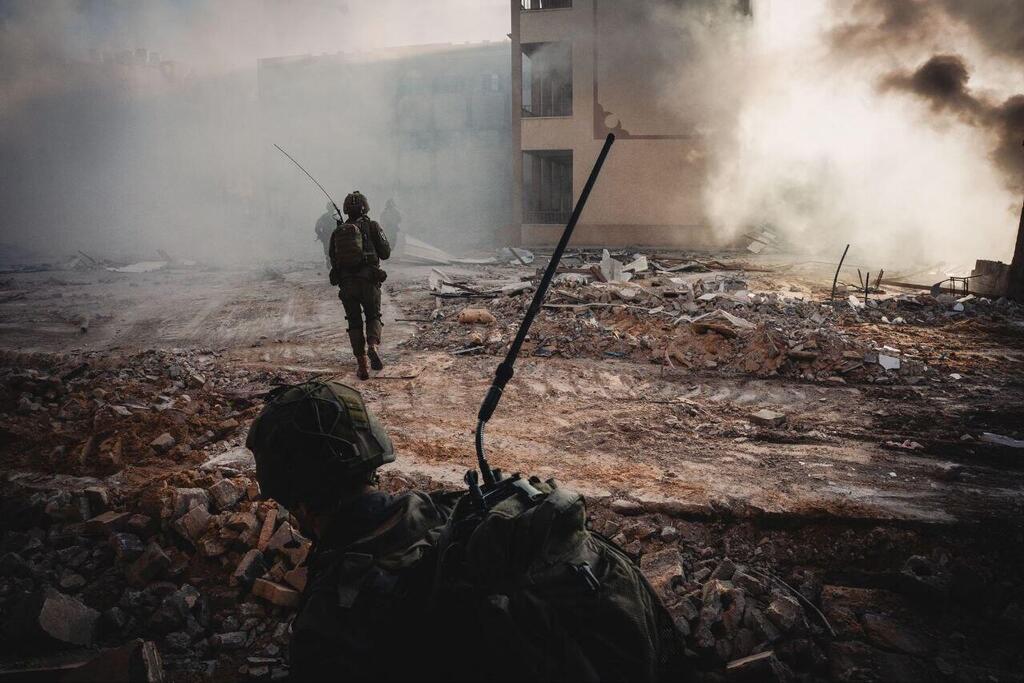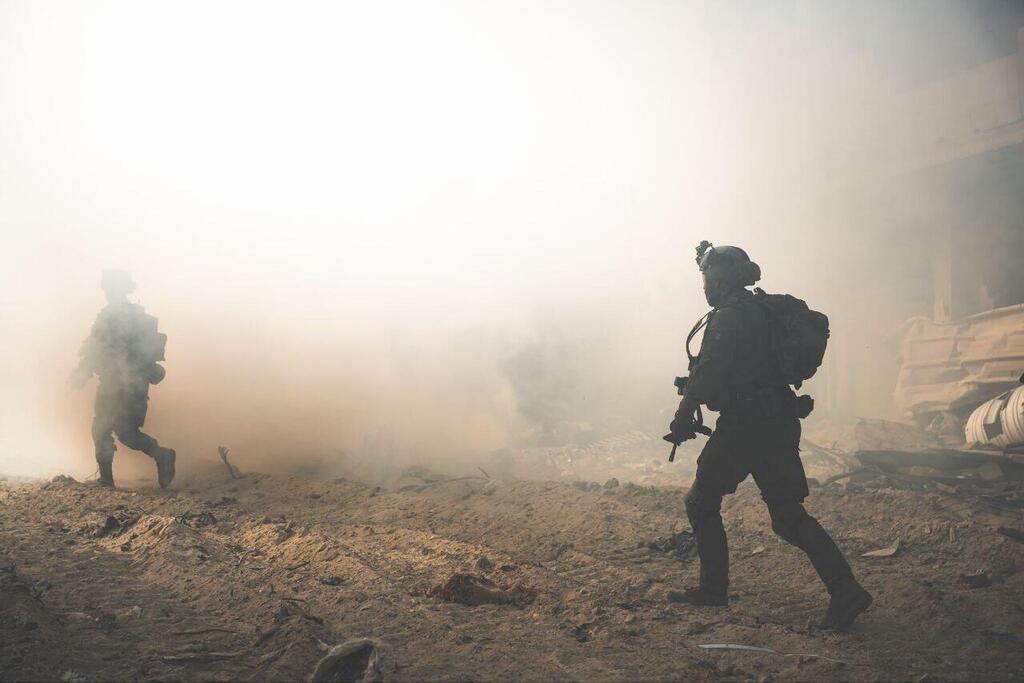Getting your Trinity Audio player ready...
It was one of the most complex battles experienced by IDF forces in the Gaza Strip, involving five repeated attempts to eliminate a terrorist cell over half a day and the persistence of a young Maglan unit commander who refused to give up.
February 16 is not remembered as an extraordinary day of combat in the southern Gaza Strip. At that time, the 98th Division's ground operations in Khan Younis were underway, with the Commando Brigade assigned to raid one of Hamas' densely populated and stubborn terror hubs in the city - the seaside refugee camp, relatively far from the Israeli border.
Maglan force operating in Gaza
(Video: IDF Spokesperson's Unit)
Leading the charge for this mission was Major G, 26, the commander of the Maglan unit's newly formed raiding force during the war. Maj. G aimed to eliminate as many terrorists as possible in the refugee camp, fully aware of Hamas' warfare tactics: the terror army evacuates most of its operatives with the civilian population, thanks to IDF's early evacuation warnings to residents.
As a result, IDF forces raiding another village or neighborhood primarily focus on locating and destroying tunnels and weapon stockpiles, avoiding IEDs and, at best, confronting a few small guerrilla cells left behind. Most of Hamas' combat was defined as a "retreat battle."
"This time, we decided to quietly enter the refugee camp, where no soldier had set foot. We sneaked in, a few dozen fighters from the unit, in the middle of the night, silently without firing a single shot," Maj. G recounted to Ynet. "We then positioned ourselves in hidden spots among the alleys, waiting for dawn to surprise the enemy."
At first light, the commotion began. Hundreds of terrorists from the nearby Nasser Hospital, which the IDF had raided a few days earlier, joined the many terrorists in the refugee camp. As a result, over 1,000 well-armed terrorists found themselves in a camp not yet captured by the IDF, unaware that Maj. G and his Maglan fighters were now lying in wait right under their noses on their home turf. Maj. G decided to position his fighters at vantage points controlling the camp's main road, intending to trap the many terrorists attempting to flee as the fighting commenced.
In the third watch, just before dawn, Maj. G and his fighters launched small armed tactical drones to secure the refugee camp area. Snipers loaded their silenced rifles, and the elite unit’s missiles were assigned targets by ground troops.
In a successful deception operation by the Maglan fighters, hundreds of Hamas terrorists, including operatives of the elite Nukhba force, began to emerge in all directions. Though Maj. G's force was initially outnumbered in the first hours of relentless firefight, sometimes at close range, the element of surprise shocked the local Hamas battalion.
“Dozens of terrorists attacked us, and we managed to eliminate at least 30 of them,” recounted Maj. G. Meanwhile, reinforcements poured in from every direction, including tanks and APCs, with IDF forces closing in on the terrorists from additional angles. Yet, by evening, the intense and daring day of combat turned into an endless battle.
During the late afternoon skirmishes, Maj. G’s troops identified a courtyard with an improvised roof in one of the refugee camp's buildings. As they searched building by building for terrorists, additional forces, including armored companies, engineering units and another Maglan platoon, joined the area to adhere to the command principle set by the 98th Division leaders: minimize enemy escapees, maximize terrorist elimination.
“On the first floor, we found a covered courtyard, and suddenly, I heard a wild burst of gunfire from that direction without seeing any terrorists,” Maj. G recounted. “One of our soldiers was hit, and we realized the courtyard had a hidden lower level where the shooting originated from.”
The team leader engaged in the firefight and threw grenades, but they needed to locate the exact firing point. “We saw many refrigerators on the courtyard floor and started moving them. Then we noticed an opening to a combat basement concealed by the fridges.”
Maj. G evacuated the wounded soldier, who was quickly taken to a hospital in Israel. The team leader’s force killed one terrorist in the initial clash. Then Maj. G decided to retreat from the building, maintain control over it, and strategize on how to deal with the remaining armed cell hiding in the basement.
"We didn't know how many terrorists were left inside and debated whether to drop a bomb from a fighter jet on the house, but we believed the reinforced concrete roof of the basement would protect the terrorists even from an airstrike, and we weren't sure we would get approval for a penetrating bomb," recalled the platoon commander. "We looked for a creative solution and found a wheelbarrow, on which we rolled an engineering breaching frame toward the basement's outer wall, ensuring penetration with six segments.
"The breaching frame exploded, creating a hole in the basement wall. We hoped the massive blast would also injure the terrorists inside," he recounted. "As the dust settled, we sent in a small drone. It was still dusty and dark, but then we saw through the drone a terrorist lying with his weapon between his legs, motionless.
"The drone was inches from him; we wanted to confirm he was dead. The team leader was sent to the opening, threw a grenade inside, and then the terrorist, who had been playing dead, fired a burst and wounded a soldier, who was quickly evacuated to a hospital in Israel. We sent the drone back in and saw the terrorist was hit but still alive, hiding behind sandbags. He had already survived 10 grenades thrown at him. The drone drove him crazy, but he didn't move."
Maj. G regrouped his forces outside the building and created a third opening toward the basement, this time from the alley side. Four drones with large flashlights were launched through all openings simultaneously to try to force the terrorist to move or flee. The soldiers also identified discarded combat vests of the terrorists. It was the sixth hour of battle, night had fallen on the refugee camp, and Maj. G did not give up, nor did the terrorist. The team created a fourth opening in the wall where the terrorist was leaning, intending for the breaching frame to blow him away.
"He survived that too," Maj. G shared. "Like a cat, he leaped to another corner of the basement. We then fired a drone from another opening and set up another ambush with drones and soldiers, threw in three grenades and sprayed the basement with gunfire. The dust settled again, and then we saw him through the drones, lying apparently dead. I sent an Oketz attack dog to confirm. The dog dragged him a few meters, and we realized he was dead. We decided to return at first light to ensure there were no more explosives. We found two more terrorists we had killed during those hours, hidden in basement corners equipped for prolonged operational stays."
During the breaks between battles in the nine months of the war, Maj. G often heard claims that these hornet nests should only be dealt with from the air with relentless bombings. "People who don't understand the profession say that. Fighting in Gaza is complex. Here, we used LAW and Matador missiles in a long pressure cooker situation. If we had dropped a bomb on the house, hours after we left, the terrorists would have emerged alive from the rubble because their tunnels and basements are reinforced with concrete," he explained.
"Hamas adapts and changes during the fighting, which is why our infantry operations are necessary in every corner of the Gaza Strip. I didn't want to leave until all the terrorists were eliminated. The two wounded soldiers are now in rehabilitation. They'll be okay."







